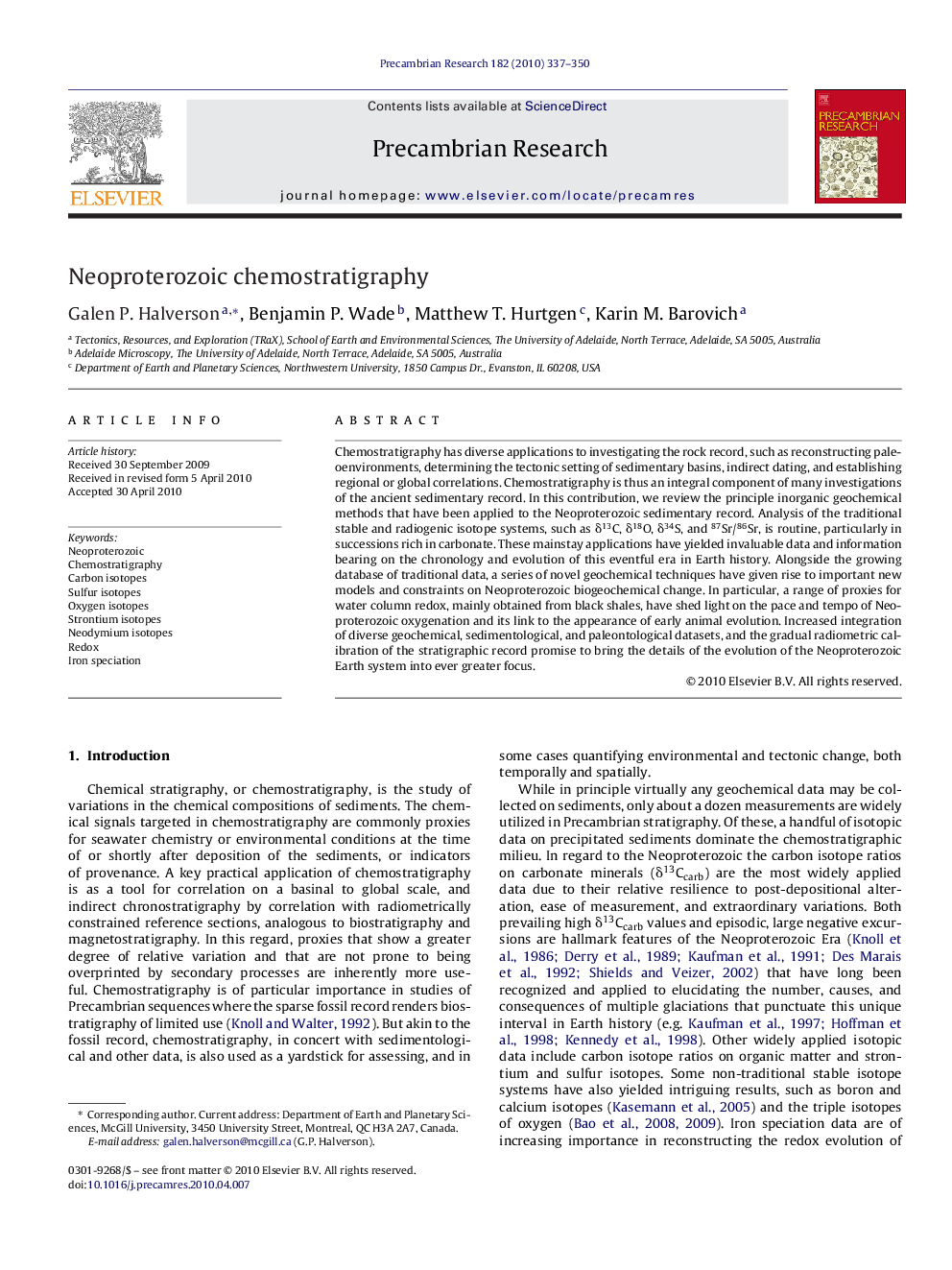| Article ID | Journal | Published Year | Pages | File Type |
|---|---|---|---|---|
| 4723885 | Precambrian Research | 2010 | 14 Pages |
Chemostratigraphy has diverse applications to investigating the rock record, such as reconstructing paleoenvironments, determining the tectonic setting of sedimentary basins, indirect dating, and establishing regional or global correlations. Chemostratigraphy is thus an integral component of many investigations of the ancient sedimentary record. In this contribution, we review the principle inorganic geochemical methods that have been applied to the Neoproterozoic sedimentary record. Analysis of the traditional stable and radiogenic isotope systems, such as δ13C, δ18O, δ34S, and 87Sr/86Sr, is routine, particularly in successions rich in carbonate. These mainstay applications have yielded invaluable data and information bearing on the chronology and evolution of this eventful era in Earth history. Alongside the growing database of traditional data, a series of novel geochemical techniques have given rise to important new models and constraints on Neoproterozoic biogeochemical change. In particular, a range of proxies for water column redox, mainly obtained from black shales, have shed light on the pace and tempo of Neoproterozoic oxygenation and its link to the appearance of early animal evolution. Increased integration of diverse geochemical, sedimentological, and paleontological datasets, and the gradual radiometric calibration of the stratigraphic record promise to bring the details of the evolution of the Neoproterozoic Earth system into ever greater focus.
